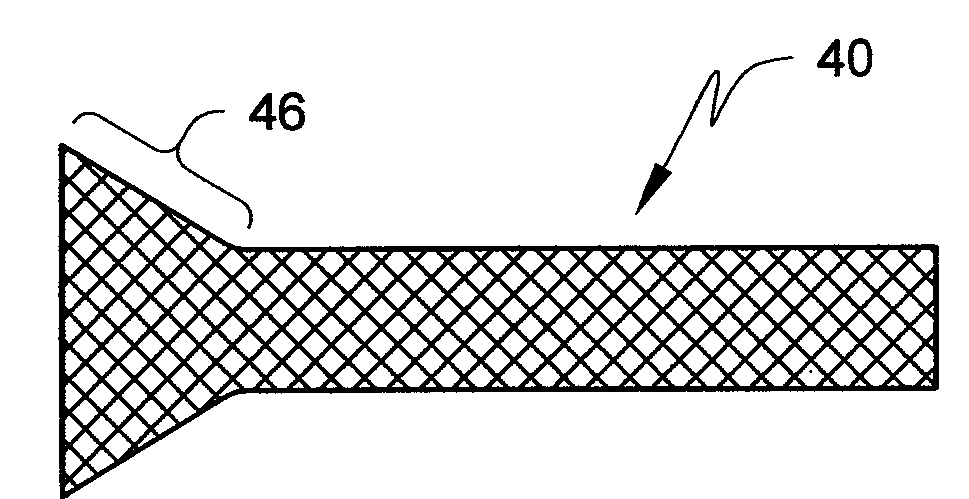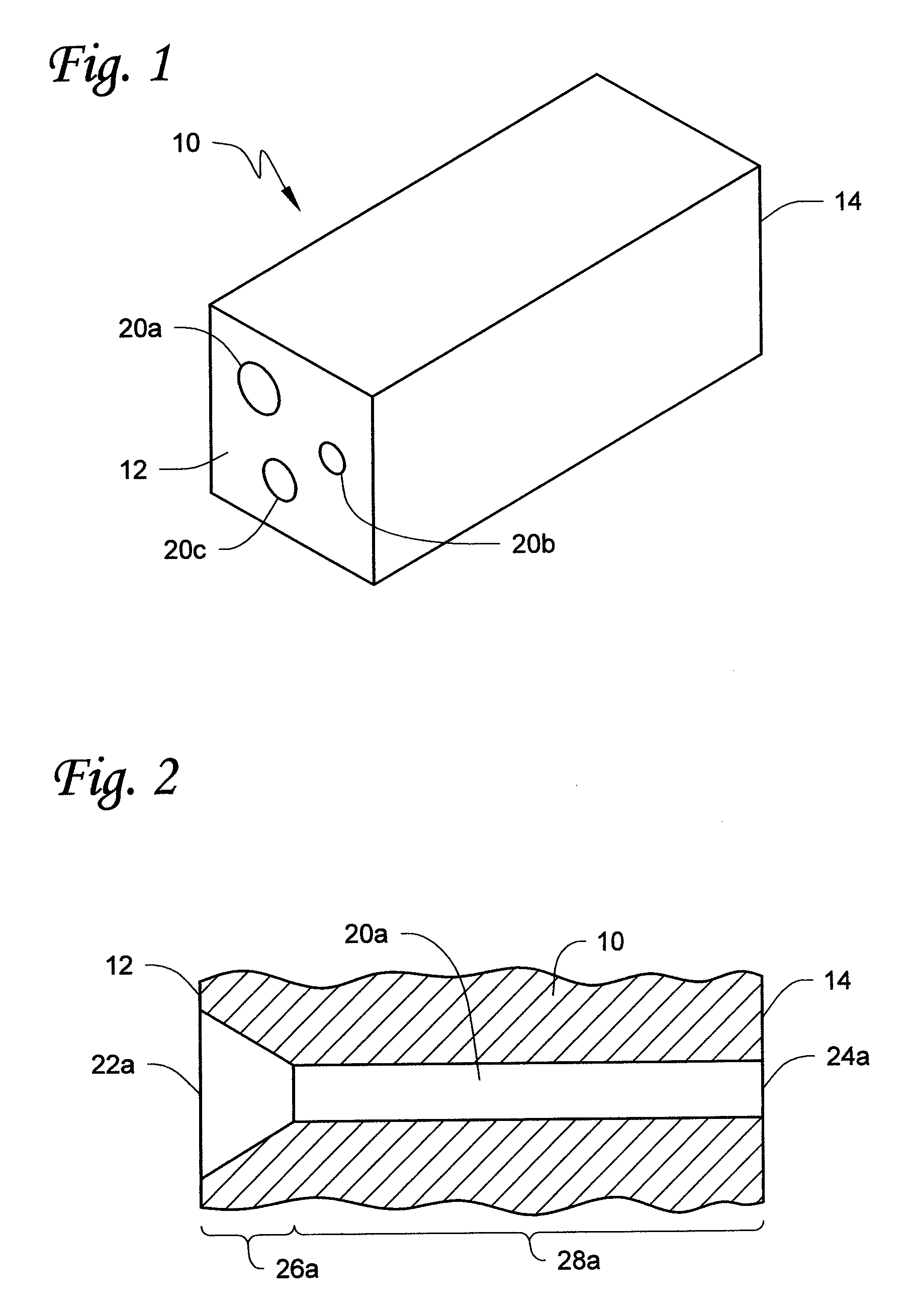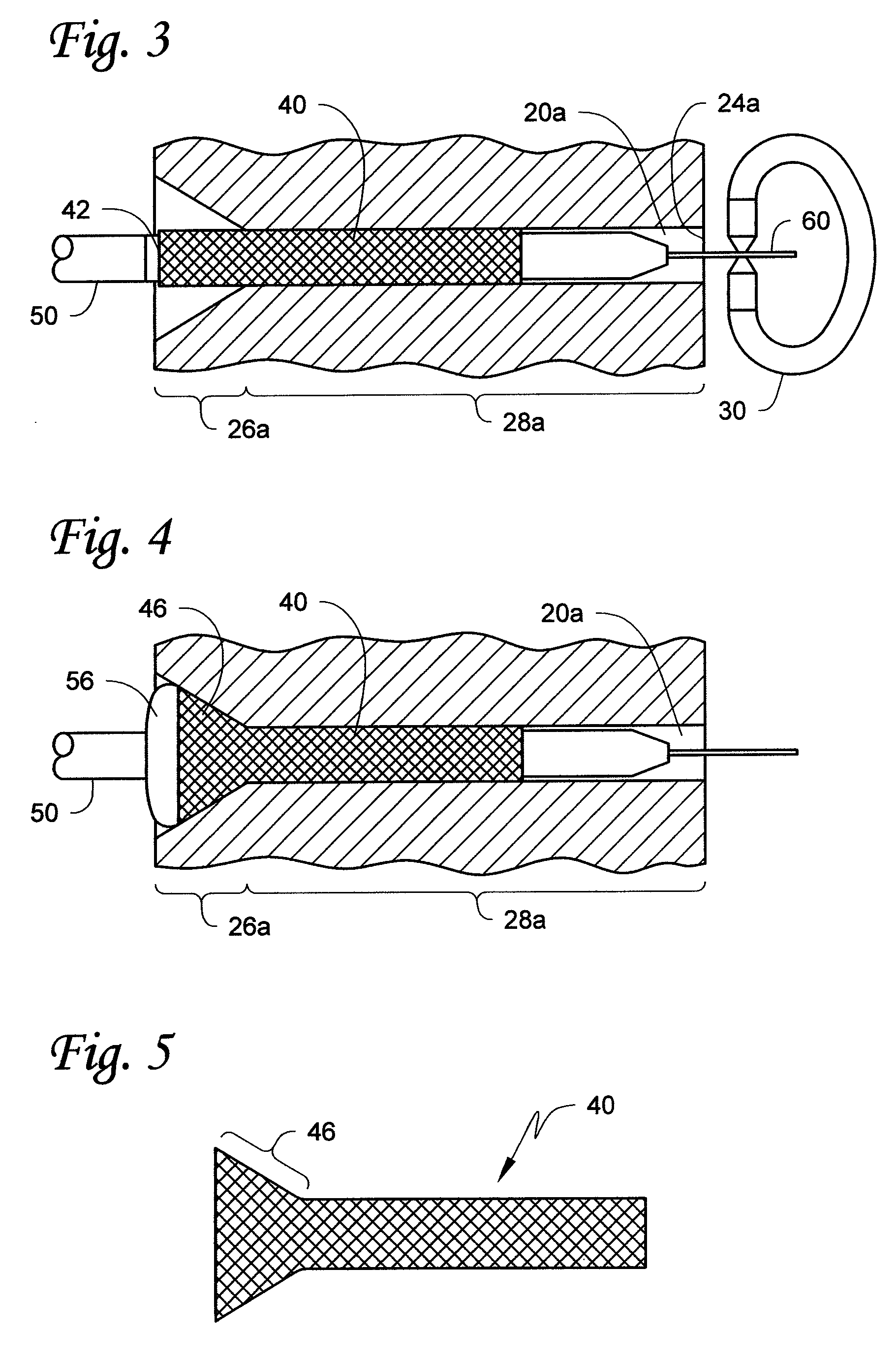Ostial stent preforming apparatus, kits and methods
a technology of ostial stent and pre-forming equipment, which is applied in the field of ostial stent pre-forming equipment, kits and methods, can solve the problems of patient complications, difficult placement of stents within vasculature, and placement of stents to repair diseased vessels that are branch vessels, etc., and achieve the effect of constant diameter and constant diameter
- Summary
- Abstract
- Description
- Claims
- Application Information
AI Technical Summary
Benefits of technology
Problems solved by technology
Method used
Image
Examples
Embodiment Construction
[0024]In the following detailed description of illustrative embodiments of the invention, reference is made to the accompanying figures of the drawing which form a part hereof, and in which are shown, by way of illustration, specific embodiments in which the invention may be practiced. It is to be understood that other embodiments may be utilized and structural changes may be made without departing from the scope of the present invention.
[0025]A variety of documents describe the advancement and placement of stents within vessels, including the advancement and placement of ostial stents. See, e.g., U.S. Patent Application Publication Nos. US 2002 / 0077691 (Nachtigall); US 2002 / 0091434 (Chambers); US 2004 / 0111143 (Fischell et al.); etc.—as well as U.S. Pat. No. 5,607,444 (Lam); U.S. Pat. No. 5,749,890 (Shaknovich); etc.
[0026]The stents that can be used in connection with the present invention may include, e.g., any conventional stent that can be deformed to include a flared end suitabl...
PUM
| Property | Measurement | Unit |
|---|---|---|
| Length | aaaaa | aaaaa |
| Diameter | aaaaa | aaaaa |
| Shape | aaaaa | aaaaa |
Abstract
Description
Claims
Application Information
 Login to View More
Login to View More - R&D
- Intellectual Property
- Life Sciences
- Materials
- Tech Scout
- Unparalleled Data Quality
- Higher Quality Content
- 60% Fewer Hallucinations
Browse by: Latest US Patents, China's latest patents, Technical Efficacy Thesaurus, Application Domain, Technology Topic, Popular Technical Reports.
© 2025 PatSnap. All rights reserved.Legal|Privacy policy|Modern Slavery Act Transparency Statement|Sitemap|About US| Contact US: help@patsnap.com



